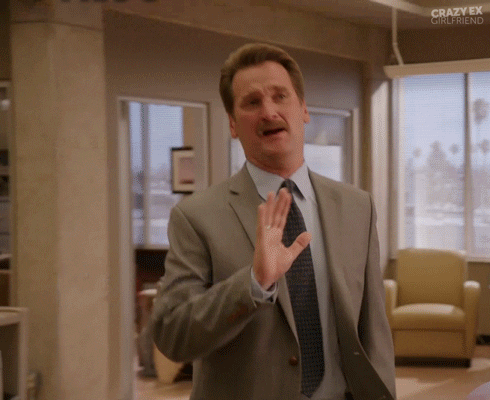If you’re leading through change, you’re probably getting more advice than you can absorb.
“Embrace ambiguity.”
“Onward & upward!”
“Whatever you do, just keep moving.”
ACK.

I recently did a review of the top articles that appear when you google “leading through change,” and not only was much of the advice outdated, it was in most cases, exhausting . . and often, depressing.
Let’s change that.
Directly or indirectly in my role as an executive and leadership coach, I’ve watched the choices professionals at all levels make as they’re leading through change.
And there’s one power move that works consistently, over time.
In fact, it’s highly counterintiutive to what we’ve been taught by leaders of the old-school command & control era, when workers were plentiful, expendable, and did whatever their leaders asked them to do.
And it may surprise you.
Here it is:
When you’re leading through change, the counterintuitive move is to communicate imperfectly, more often

Why This Move is Right for Right Now
Based on the requests I get from companies, the demand for “executive presence” and “executive communication skills” coaching have skyrocketed in the past few years.
There’s a handful of reasons behind this, including reduced focus on teaching professional communication skills (both verbal and written) in our education systems, plus rising confidence and imposter syndrome challenges in an age of constant comparison to others.
One perfect workshop, book or catch phrase doesn’t change these embedded mindsets overnight. And I’m biased, but I know that working with a professional coach, can help–but hey, it’s not the magic wand, either.
If you want to be a better communicator as a leader, start by being a leader who communicates.
In other words, when you’re leading through change, it’s time to communicate with your people more, even if what you’re saying—and how you’re saying it—is less than perfect.
Okay, I hear you.
If you’re like the leaders I coach and teach, you’re probably thinking something like this:
- “Communicate more? But I don’t have any new news, so I need to wait until there’s something to share.”
- “I don’t want to say something that later turns out to be wrong.”
- “People don’t read anyway–we don’t need to create more “stuff.””
- “Oh, and I don’t want to waste anyone’s time by repeating myself.”
These are all respectable arguments–except that they’re all completely wrong.
You’re believing the outdated myth that leadership communication is about the WHAT, or even the WHY.
And yes, there’s a time and place for WHAT and WHY.
But if you want to lead through change successfully, here’s a mind-blowing fact for you.
Today’s leadership communication is really about the WHO.
No, not the English rock band (still touring as I write this in 2020, although if that’s the change you’re leading through, you’ve got other challenges on hand.)
Your leadership communication is about the WHO that is YOU.

Basically, your employees, customers, clients and any other stakeholders are asking one thing:
Can I trust you?
Really, can I?
That’s it.
But it’s a big it.
Not sure? Then think for a minute about the best leader you ever had.
Maybe it was a boss, teacher, or even your mum.
Why was that person the best leader for you?
When we break down answers to this question, it’s often because no matter what the circumstances, we knew that person was reliable–we trusted what they did and said.
They were a consistent, predictable presence.
Maybe we didn’t see them every day, but when we did, we generally knew what to expect from them as a human being.
That’s the definition of trust.
You can be that best leader for the people you’re currently managing through change. Just remember this:
Trust = Truth/Time
When you’re only communicating the WHAT (when there’s a new WHAT to share), you’re not showing up often enough over time.
In fact, in most of today’s complex and looooong-term change efforts, new WHAT is few and far between (heck, we’re still absorbing the last WHAT.)
Plus, when’s the last time you heard something one time– and truly believed it?

Yes, I see you.
You and your colleagues have learned to ignore the first (and maybe third) announcements of a new initiative or direction because you’ve seen them come and go like mood rings and pet rocks.
But remember our friends in sales and marketing, who used to talk about the “rule of 7?” This meant that a customer needed to hear their message seven times before buying. Today, I’ve seen data that says that number is closer to 15 or more.
As a leader of people, you’re always selling trust in YOU.
Honestly, it’s really all you have for sale.
Repetition builds trust.
Repetition builds trust.
Repetition builds trust.
Believe me, you’ll get tired of the message long before your people will start believing it.
Keep delivering it, though, and resist the urge to change course.
Okay, so HOW should I do this?
How do I communicate more, without overwhelming people’s inboxes?
How do I do it without spending ALL my time on this (after all, I’ve got changes to implement)?
How do I communicate more if I don’t have a team of communication professionals on staff?
You don’t need a staff, external consultants, or a fancy system to get started.
(If you have those, share this article with them so they’re on the same page with your intention–to communicate more, even when there’s nothing new to say so that you keep building trust.)
Here’s the simplest way to get started: create conversations during the moments you already have.

You already have moments you can use to stop, connect, talk–and listen.
- The start of any meeting you lead.
- The start of any conference call or video call you lead.
- Parking lot, hallway, lunch room or even bathroom intersections (if you’re a leader who uses a different parking lot, hallway, lunch room or bathroom, a simple way you can communicate more is to start using the locations everyone else does. Sometimes just being visible–even if you don’t say a word–communicates volumes. )
- Communication channels that already exist, such as newsletter, intranet post, or town hall.
And of course, leading through change often demands we create new channels for building trust, such as:
- Office hours, where leaders commit to being accessible at a certain place and time;
- Special slack or other internal messaging channels;
- Video or podcasting, especially to reach remote and hourly teammates.
Don’t overthink it.
Just start talking more.
What Can You Say
Communicating more sounds easy.
It’s not.
But you don’t have to make speech after speech.

You just have to open the door. Phrases like this can help:
- Before we begin, I just wanted to acknowledge that this system’s still new, and I’m grateful for how you’re diving in. (Appreciation is always a good choice–find more scripts for showing appreciation here.)
- “I may not have all the right words right now, so bear with me. . .”
- “I don’t have any new news, but let’s catch up on where we’ve been and where we’re going ..”
- “Here are a few questions I’m hearing.. “
- “Here are a few things you might be wondering . . .”
- “I can’t promise you that this won’t change, but here’s the picture right now . .”
And then, listen.
- “I’d like to hear more from you. What are the biggest things you’re wondering about? I may not have all the answers but I’d really like to understand the questions.”
What Now?
You know, you’re a good leader.

I know that because crappy leaders don’t read professional development articles like this–and they certainly don’t read this far down.
That’s how I know you are–or aspire to be–a good leader to your people and your company.
And here’s what I know about you as a good leader.
You’re focused on your people and helping lead them through whatever change is afoot.
You’re worthy of their trust.
Help them see it by communicating more, even when you’re not sure what to say.
You’ve got this.
Need more help?
If you’re leading through change, don’t go it alone. It’s time to work with a professional coach like me who can help you communicate more, more effectively, and create the change you need in your team–and in yourself.
It’s easy to get started. Just hit the button below, and pick a date and time for an initial chat. Answer a few short questions, and then I’ll call you at the time you picked. There’s nothing to prepare–just show up right where you are. If, after we talk, it sounds like one of my coaching programs or courses will help you going forward, I’ll share details after our call. There’s no pressure -my goal is to be helpful immediately.
Spots fill up fast, though, so schedule yours now and start getting the support you deserve.
Read this next:
Help Your People Want to Stay: How to Show More Appreciation at Work



